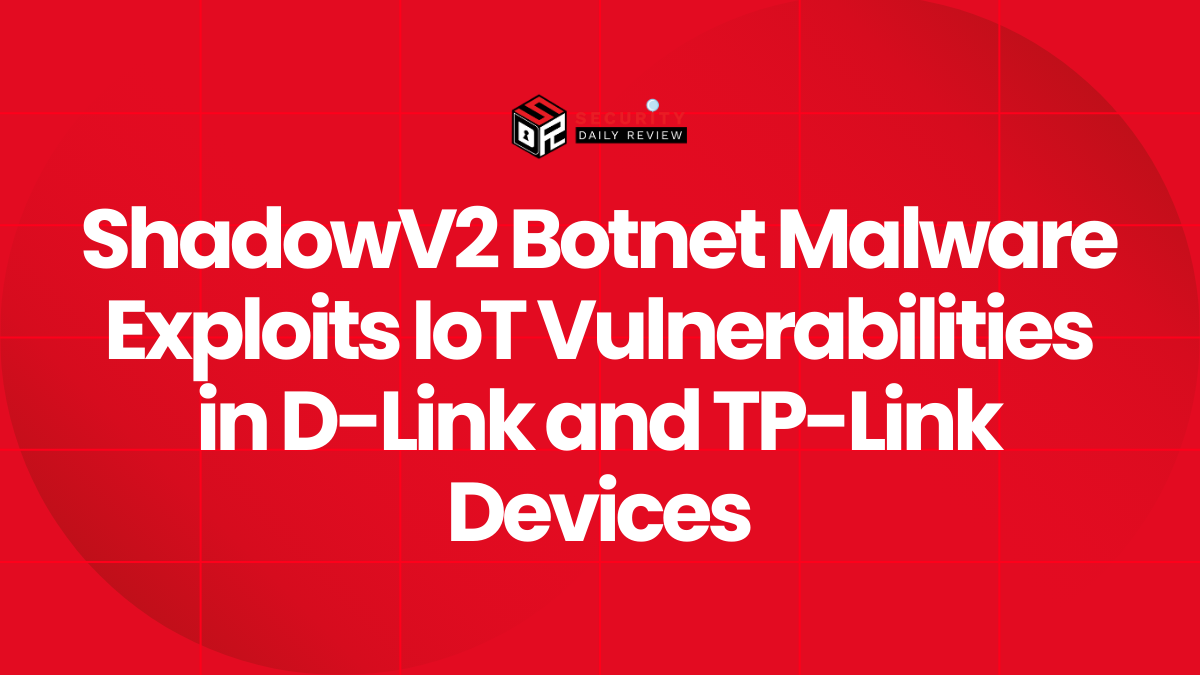The recent discovery of a new malware, termed ‘ShadowV2’, indicates a rising threat in the cybersecurity landscape. This Mirai-based botnet leverages known vulnerabilities to infiltrate Internet of Things (IoT) devices, especially from manufacturers like D-Link and TP-Link. The implications for IoT device users and network security are significant, underscoring the need for heightened vigilance and stronger security measures.
ShadowV2 Malware Targets Vulnerable IoT Devices
The emergence of ShadowV2 marks a continuation of threats against IoT systems. As IoT devices proliferate across homes and industries, each connected gadget becomes a potential entry point for cybercriminals. ShadowV2 is particularly insidious due to its reliance on established vulnerabilities, offering hackers an effective route into IoT networks without needing novel exploitation techniques.
Exploitation of Known IoT Vulnerabilities
ShadowV2’s method of attack highlights a critical issue: the persistent lack of patching in many IoT devices. The malware capitalizes on unpatched weaknesses, some of which have been publicly documented for years.
- D-Link Vulnerabilities: Devices from D-Link have repeatedly been flagged for security issues, many of which remain unaddressed.
- TP-Link Exploits: TP-Link devices feature prominently in ShadowV2’s exploitation arsenal, victimized by longstanding vulnerabilities in their software.
- Other Vendors: Beyond D-Link and TP-Link, various other brands are susceptible, illustrating a widespread problem with IoT security.
Understanding the Threat Posed by ShadowV2 to Networks
The infiltration of ShadowV2 extends beyond individual devices, posing a systemic threat to entire networks. When compromised, an IoT gadget can become a launchpad for further attacks, impacting both personal and professional environments.
Impacts of Compromised IoT Devices
Once an IoT device is compromised, its use extends beyond mere network intrusion:
- Data Breaches : Sensitive data passing through the device can be intercepted and misused.
- Botnet Participation : Compromised devices may be conscripted into larger botnets, facilitating distributed denial-of-service (DDoS) attacks.
- Resource Exhaustion : The additional processing load from malware operations can degrade device and network performance.
Defensive Measures and Best Practices for IoT Security
In light of this threat, users and network administrators are encouraged to adopt proactive security measures. Effective defense against ShadowV2 and similar threats requires a multi-faceted approach.
Steps to Enhance IoT Security
To mitigate the risks posed by ShadowV2, consider the following strategies:
- Regular Updates : Ensure all devices are updated with the latest firmware to patch known vulnerabilities.
- Network Segmentation : Isolate IoT devices on separate networks to limit exposure.
- Robust Passwords : Replace default device passwords with strong, unique credentials.
Future Threat Mitigations and Adaptations
Beyond immediate measures, developing ongoing strategies to improve IoT resilience is crucial:
- Vendor Accountability : Manufacturers must prioritize timely vulnerability management and patch releases.
- User Education : Increasing awareness about IoT risks can empower users to maintain vigilant security postures.
The arrival of the ShadowV2 malware serves as a stark reminder of the ongoing risks facing IoT ecosystems. By exploiting known vulnerabilities, this botnet underscores the urgent need for enhanced device security and responsible practices among manufacturers and consumers alike.









